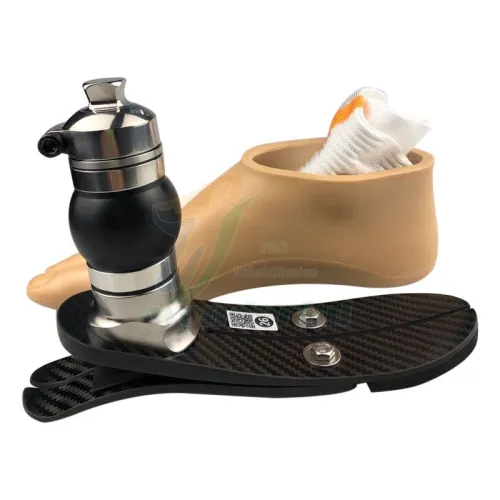Choosing the Right Prosthetic Foot: Factors to Consider
When it comes to selecting a prosthetic foot, the importance of making an informed decision cannot be overstated. A prosthetic foot is not just a functional replacement; it plays a pivotal role in restoring mobility, comfort, and confidence to individuals who have experienced limb loss. With advancements in prosthetic technology, there are numerous options available, each tailored to specific needs and preferences. In this comprehensive guide, we will delve into the key factors to consider when choosing the right prosthetic foot, ensuring a better quality of life and enhanced mobility for prosthetic users.

Type of Amputation
The type of amputation you've undergone significantly influences the type of prosthetic foot that would be suitable for you. Whether it's a below-the-knee (transtibial) or above-the-knee (transfemoral) amputation, the mechanics of walking and weight distribution differ. Prosthetic feet are designed to mimic the natural movement and mechanics of the human foot, and choosing the appropriate type ensures better functionality and comfort.
Activity Level
Consider your activity level and lifestyle when selecting a prosthetic foot. Are you an athlete, a regular walker, or someone with a more sedentary lifestyle? There are prosthetic feet designed for specific activities, such as running or swimming. High-activity feet offer enhanced shock absorption and energy return, while everyday feet provide stability for routine tasks.
Weight and Build Material
The weight of the prosthetic foot can significantly affect comfort and mobility. Lighter materials such as carbon fiber offer a more natural gait and reduce strain on the residual limb. The build material also determines the foot's durability and longevity. Discussing your preferences with your prosthetist can help you find the right balance between weight and durability.
Shock Absorption and Energy Return
Modern prosthetic feet often incorporate advanced shock absorption and energy return technologies. These features play a crucial role in reducing impact on the joints and promoting a smoother gait. Shock-absorbing pylons and responsive footplates are examples of technologies that contribute to improved comfort and reduced strain on the body.
Alignment and Adjustability
Proper alignment is essential to achieve optimal balance and functionality with your prosthetic foot. Some feet offer adjustability in alignment, allowing prosthetists to fine-tune the foot's angle and position according to your unique needs. This ensures that your gait remains as close to natural as possible.
Ankle and Heel Functionality
The ankle and heel play vital roles in maintaining stability and adapting to different terrains. Some prosthetic feet incorporate articulating ankles that mimic the flexibility of a natural ankle joint. Others feature split heels for better shock absorption during activities like running or jumping. Discussing your preferences and requirements with your prosthetist can help you choose a foot with the desired level of ankle and heel functionality.
Cosmesis and Aesthetics
Beyond functionality, the appearance of the prosthetic foot also matters to many individuals. Some prosthetic feet offer cosmetic covers that resemble the appearance of a natural foot, contributing to a more aesthetically pleasing look. The ability to choose from different skin tones and cosmetic options allows for a personalized and confident appearance.
Prosthetist Consultation
Ultimately, the guidance of a qualified prosthetist is invaluable in the process of selecting the right prosthetic foot. Prosthetists have the expertise to assess your individual needs, consider your lifestyle, and recommend options that align with your goals. Their experience ensures that you receive a prosthetic foot that enhances your mobility and overall well-being.
Conclusion
Selecting the right prosthetic foot is a significant decision that can greatly impact your daily life and overall comfort. By considering factors such as your type of amputation, activity level, build material, shock absorption, alignment, ankle and heel functionality, aesthetics, and consulting with a prosthetist, you can make an informed choice that enables you to regain your mobility, confidence, and independence.
593
0
0


Comments
All Comments (0)